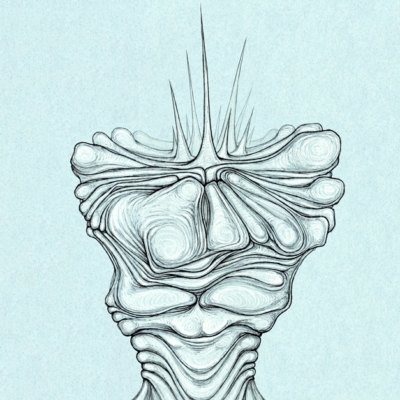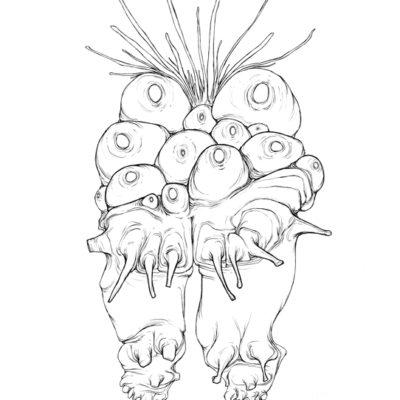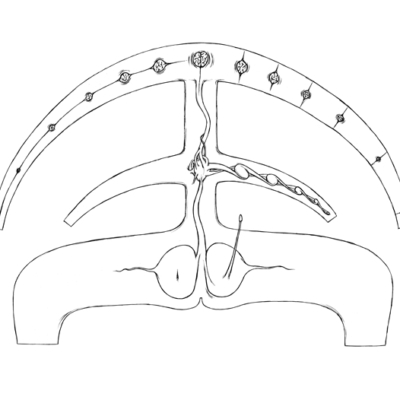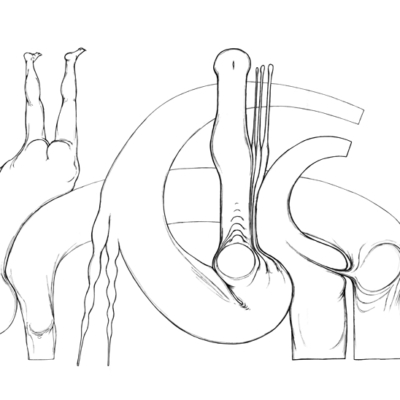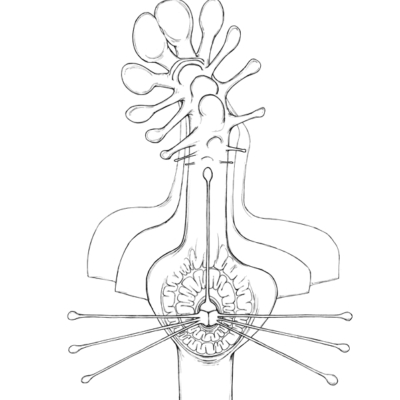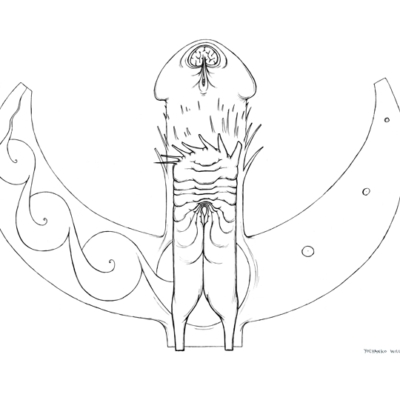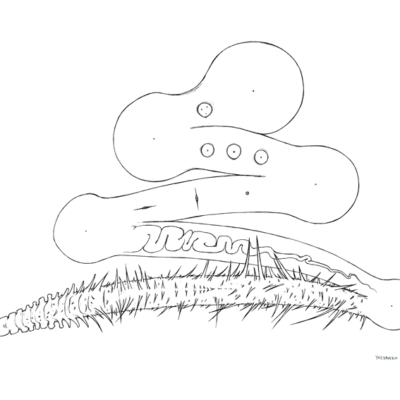Cosmic Nights
Futuristic Mythologies and Cosmic Identities
A persistent yearning for a romanticized past informs the often fantastic imagery carefully and methodically drawn by Yolyanko William. A consummate draftsman and erudite visionary, William uses his academic skills to invent a new mythology that combines the past with the future. It is a vision shared by many artists over the centuries, now made contemporary by his unique style of naturalistic manipulation and flowing organic designs. Imbued with erotic overtones, his imagery transforms traditional references to the cosmos and mysticism to human anatomical forms that metamorphosize, merge and reemerge into inventive new shapes and imaginative configurations that defy reality, as much as they are provocative and impossible.
In his latest three series: Cosmic Nights, Recapitulation, and The Engulfed Cathedral, he explores elements of anatomy as references to the creation of a multi layered structure of perspectival references, dominated by the human body.
Despite these obvious comments on human figures and body parts, each revealed as individual elements opening into a fluctuating organism, the seemingly predominant eroticism gives way to a most unusual interpretation of concepts relating to the philosophical.
Cosmic Nights presents the opportunity to delve into the mind of the artist to understand the inspiration for these and other works that are always infused with arcane symbolism and allusions to the occult, a subject that has long fascinated him. It was the Tibetan text: Cosmic Evolution: Seven Stanzas from the Secret Book of Dzyan, a work discovered and made known to the world by the theosophist Helena Blavatsky and said to be the oldest known cosmogonic text, that challenged his own world view and revealed to the artist new concepts to investigate. With its description of the evolutionary life of humanity and its transit through various stages of development, William realized that he could translate these obscure beliefs into their visual counterparts. He sees it as a mental exercise, an interval and opportunity, to assimilate esoteric and mysterious ideas and bring them into a new reality and act of regeneration through his drawings.
William continues his journey into a strange and perhaps futuristic view of the universe through notions related to humanity and its anatomical configurations with their constant transformations in other series. Always dominated by a spontaneous approach to making imagery, it is as if he allows his imagination to take control as he reaches into the future with his pen.
Carol Damian
Professor of Art History Florida Internacional University


